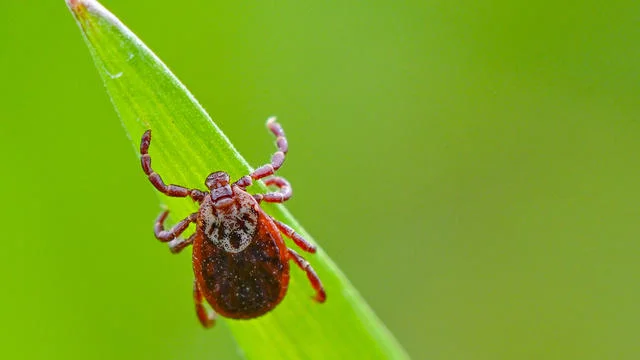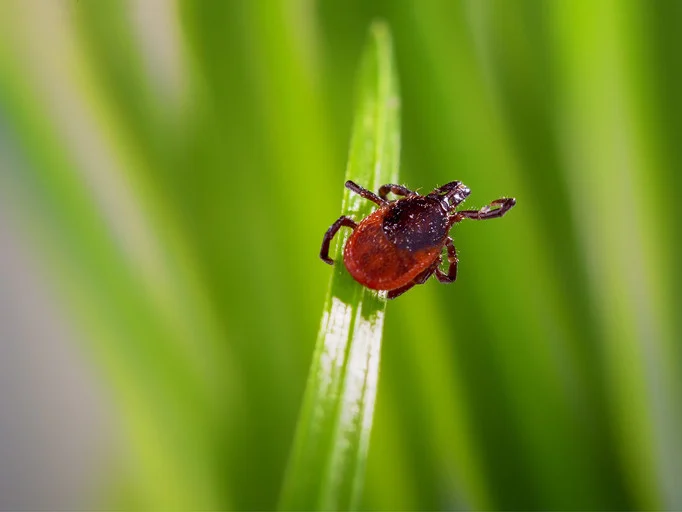Northern Wisconsin is a haven for outdoor enthusiasts, but with its lush forests and abundant wildlife comes a hidden danger: ticks. The recent tragic fatality in Bayfield due to a tick-borne illness serves as a stark reminder of the very real risks posed by these tiny arachnids. While such severe outcomes are uncommon, understanding tick-borne diseases, their symptoms, and crucial prevention strategies is more vital than ever.
In an interview following the Bayfield fatality, Dr. James Thatcher of the Aspirus Tick-Borne Illness Center in Woodruff highlighted the rising concern, particularly around rarer but potentially severe infections like the Powassan virus. “I’m concerned about Powassan because there’s no real blood test for it,” Dr. Thatcher noted, emphasizing its tricky nature and slow onset of symptoms, often mimicking other illnesses like Lyme disease.
Wisconsin, and particularly its northern regions, is a hotspot for several tick-borne diseases. The blacklegged tick, commonly known as the deer tick (Ixodes scapularis), is the primary culprit behind most infections in the state.
Common Tick-Borne Illnesses in Wisconsin: Symptoms & Treatment

Being aware of the symptoms and knowing when to seek medical attention is crucial for early diagnosis and effective treatment.
1. Powassan Virus Disease (POWV)
- Vector: Blacklegged tick (deer tick).
- Key Concern: Unlike bacterial infections, there is no specific antiviral treatment for the Powassan virus. Care focuses on supportive measures to manage symptoms.
- Symptoms: Many infected individuals have no symptoms. For those who do, initial symptoms often resemble the flu: fever, headache, vomiting, and weakness. More severe cases can progress to neuroinvasive disease (meningoencephalitis), leading to confusion, seizures, difficulty speaking, and paralysis.
- Incubation Period: Can range from 1 week to 1 month after a bite.
- Severity: While rare, it can be severe and lead to long-term neurological problems or even be fatal.
2. Lyme Disease
- Vector: Blacklegged tick (deer tick).
- Prevalence: Most commonly reported tick-borne illness in Wisconsin.
- Symptoms:
- Early Localized (Days to Weeks): The characteristic “bull’s eye” rash (erythema migrans) appears in 70–80% of cases, often accompanied by flu-like symptoms (fever, chills, headache, fatigue, muscle/joint aches, swollen lymph nodes).
- Early Disseminated (Weeks to Months): Multiple rashes, facial palsy (drooping on one side of the face), severe headaches, neck stiffness, pain/numbness in limbs, heart palpitations, and dizziness.
- Late Disseminated (Months to Years): Severe joint pain and swelling (Lyme arthritis), neurological problems (shooting pains, numbness, tingling, memory issues), and cognitive impairment.
- Treatment: Highly effective with antibiotics (e.g., doxycycline, amoxicillin, cefuroxime) when caught early.
3. Anaplasmosis
- Vector: Blacklegged tick (deer tick).
- Symptoms: Usually appear 1-2 weeks after a bite. Flu-like symptoms include fever, chills, severe headache, muscle aches, fatigue, nausea, vomiting, and diarrhea. Rash is rare. Severe cases can lead to respiratory failure, bleeding problems, and organ failure, especially in older or immunocompromised individuals.
- Treatment: Responds well to antibiotics, primarily doxycycline. Early treatment is crucial to prevent severe complications.
4. Ehrlichiosis
- Vector: Primarily the Lone Star tick, but can also be transmitted by the blacklegged tick in Wisconsin.
- Symptoms: Similar to anaplasmosis, typically presenting 5-14 days after a bite with fever, chills, severe headaches, muscle aches, fatigue, nausea, vomiting, and confusion. A rash is more common in children but less so in adults.
- Treatment: Effectively treated with antibiotics, usually doxycycline.
5. Babesiosis
- Vector: Blacklegged tick (deer tick).
- Symptoms: Often asymptomatic or mild. Can cause flu-like symptoms (fever, chills, sweats, headache, body aches) and fatigue. In severe cases, it can lead to hemolytic anemia (destruction of red blood cells), jaundice, dark urine, and potentially life-threatening complications, especially in the elderly, immunocompromised, or those without a spleen.
- Treatment: Requires specific anti-parasitic medications, sometimes in combination.
6. Rocky Mountain Spotted Fever (RMSF)
- Vector: American Dog Tick (wood tick) and Rocky Mountain Wood Tick. While the name suggests western prevalence, cases occur in Wisconsin.
- Symptoms: Often begins abruptly 3-12 days after a bite with high fever, severe headache, chills, and muscle aches. A rash typically appears 2-5 days after fever onset, starting on wrists and ankles, spreading inward, and often including palms and soles. The rash can be subtle or absent in some cases.
- Treatment: Crucial to treat promptly with doxycycline, even before lab confirmation, as delays can be fatal.

Joe Scarborough Illness and Health: Separating Fact from Fi ction in 2025.
Prevention is Your Best Defense
Given the severity of some tick-borne illnesses and the lack of specific treatments for viral infections like Powassan, prevention is paramount.
- Avoid Tick Habitats: Ticks thrive in wooded areas, tall grass, and leaf litter. Stick to the center of trails when hiking.
- Dress for Protection: Wear long-sleeved shirts, long pants tucked into socks, and close-toed shoes. Light-colored clothing makes ticks easier to spot.
- Use Repellents: Apply EPA-registered insect repellents containing DEET, picaridin, IR3535, or oil of lemon eucalyptus to exposed skin. Treat clothing and gear with permethrin (never apply permethrin directly to skin).
- Perform Thorough Tick Checks: After spending time outdoors, diligently check yourself, children, and pets for ticks. Pay close attention to hair, ears, armpits, groin, belly button, and behind the knees. Shower within two hours of coming indoors to wash off any unattached ticks.
- Tumble Dry Clothes: Tumble dry clothes on high heat for at least 10 minutes to kill any ticks that may have come in on clothing.
- Tick-Proof Your Yard: Keep grass mowed, remove leaf litter and brush, and create barriers (like wood chips) between wooded areas and lawns.
- Prompt and Proper Tick Removal: If you find an attached tick, remove it immediately using fine-tipped tweezers. Grasp the tick as close to the skin as possible and pull upward with steady, even pressure. Do not twist or jerk. Clean the bite area with rubbing alcohol or soap and water. Save the tick for identification if symptoms develop.
When to Seek Medical Attention
Even if you don’t remember a tick bite, if you develop flu-like symptoms (fever, headache, body aches, fatigue) or a rash after spending time outdoors, especially in known tick areas, contact your healthcare provider immediately. Early diagnosis and treatment can significantly improve outcomes for most tick-borne bacterial illnesses.
The recent fatality in northern Wisconsin demonstrates the importance of heightened awareness and vigilance regarding tick-borne illnesses. By understanding the risks, recognizing symptoms, and consistently practicing prevention, residents and visitors alike can continue to enjoy Wisconsin’s natural beauty safely. Stay informed, stay vigilant, and protect yourself from the silent threat of ticks.



